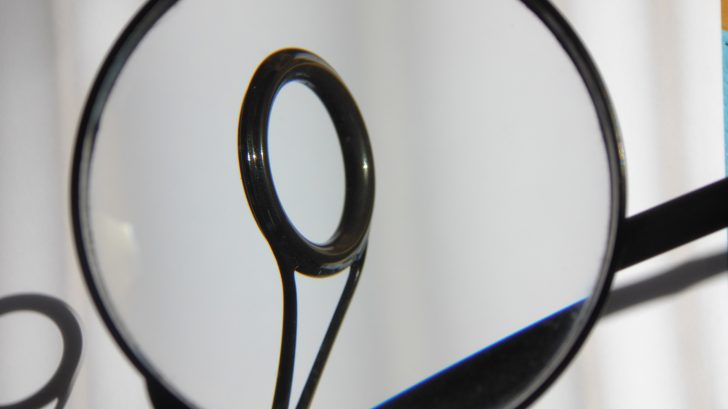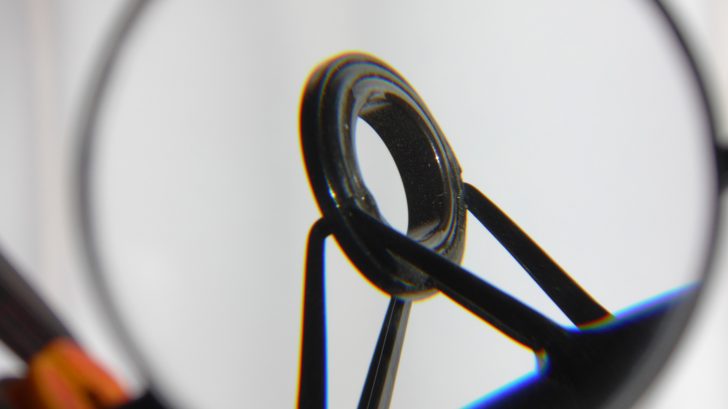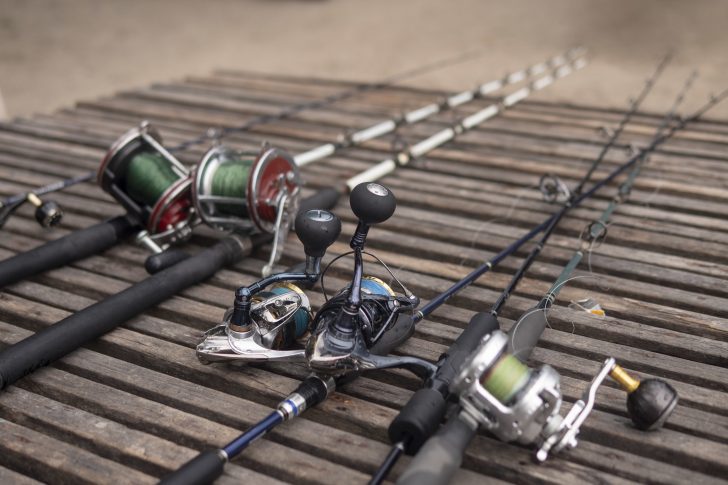Thought You Knew Everything About Your Fishing Rods? (Think Again)
Having the proper fishing gear for the task is important, like a quality fishing reel, quality fishing line and a quality rod.
When it comes to one of our favorite seasons for inshore fishing in the Lowcountry, we try to anticipate a lot of inshore action.
We target Flounder, Spotted Seatrout and Red Drum, which means there will be a lot of wear and tear on our equipment.
What I am going to try to help you with today is with something that is usually overlooked or unknown, and that is the eyes or guides on your fishing rods.
The guides on a rod are very important. They help with casting distance and the longevity of our fishing lines. There are all kinds of guides this day and age.
Some are just stainless steel and have no inserts and some are in all kinds of shapes and styles that have inserts made of different materials.
Inexpensive inserts like porcelain, and there are other materials that can be used in a higher-grade guide, such as silicone carbide, alconite, aluminum oxide, zirconium, etc.
I believe to be very important is the shape of the insert
Some inserts are made of harder materials than others, which can hold up to enormous friction and pressure without wearing the guide down.
This also means that some guides are smoother than others, which again help reduce friction and do not wear the line down while the line is in motion.
However what I believe to be very important is the shape of the insert, some inserts are flat, higher quality inserts are rounded.

The rounded insert allows the line to slide across the guide smoothly on all angles whereas the flat inserts only allow the line to cross smoothly when the rod is straight.
When you are purchasing a rod and you happen to look over a number of inexpensive rods, you will notice that they have flat inserts.
That is because these inserts are cheaper and are of less quality and these guides will not treat your line well.
A number of rod companies that are putting out fairly expensive rods and using low-quality materials
If you find yourself looking at higher quality rods, you will notice that they usually have quality inserts that are rounded and are good for your fishing line.
The reason I said looking for higher quality rods instead of saying more expensive rods is as follows.
I have noticed lately that there are a number of rod companies that are putting out fairly expensive rods and using low-quality materials, like cheap guides with flat inserts.

If an individual is not aware of how inserts and guides work, he or she may end up duped by some of these rod companies.
So let’s explain how the differences between a flat guide surface and a round guide surface affects our fishing lines.
Monofilament and fluorocarbon lines have a memory. A memory means that they often take the shape of a position that the line has been in for a period of time.

Like the shape of a spring when it is casted off your fishing reel due to the wrapping in a circle around your spool.
When monofilament or fluorocarbon takes a sharp turn off a square corner when under pressure or a load, like fighting a strong fish, it retains the memory of the action.
I am sure some of us remember our moms or family wrapping Christmas presents.
To make the wrapping of the present fancy, they would take the square edge of a pair of scissors and take a section of ribbon and run it across the scissors.
After doing so, the ribbon curls into a corkscrew. This is the same effect that a square insert or flat-faced insert has on monofilament and fluorocarbon lines.
A rounded insert allows the line to smoothly roll across the guide without that sharp turn, reducing the curling effect and the memory.
This also includes friction. But, one would wonder, how does this affect super braided lines that have become very popular?
Some braided lines are very smooth because of the type of weave that is incorporated in its construction.
Other braided lines have more of a lumpy weave and the surface is similar to the weave of rope.
When using these lines on flat guides versus rounded guides, it can be very noticeable.
When casting or retrieving, especially under a load, you will notice a humming, grinding sound across your rod.

This is due to the slight humps that are in the braid created by the weave. Each hump is scraping against the square edge of the flat insert, creating this annoying, but yet damaging effect.
Why do I say damaging? Most braided lines are treated with a coating, almost like a wax, including paint and dye.
This is done to help fill the gaps of the braid and allow it to run smoother through the rod guides. On a square edge, the coating is scraped off. You will notice this after a short amount of casts.
The color of the line will become lighter very quickly, and as the coating is removed, you will notice the sound of the roughness becoming louder.
This means that the line is becoming worn prematurely. Shortly after, you will notice frays and scuffing along the line.
As the fibers begin to splinter like little hairs, and with the price of some of these braided lines today, that can be an unwanted development.
Whereas quality rounded inserts reduce this friction and scraping tremendously, increasing the longevity of your super braids, allowing your coatings to stay on longer, allowing further casts with less friction.
When all of this comes into play, it can make the difference between reaching the fish you are aiming for or landing it.
After all, if your new line is not so new any longer due to bad guides, nothing is worse than your line popping in the middle of fighting your personal trophy fish.
So, when you have a moment, keep an eye out on your fishing rods. You may discover they are not the eyes you want.
I hope this helps everyone with this fall fishing season. Until next time, good luck out there and have fun fishing! To view some fishing adventures, go to my YouTube Channel Fishing With Jiggin Jerry.





